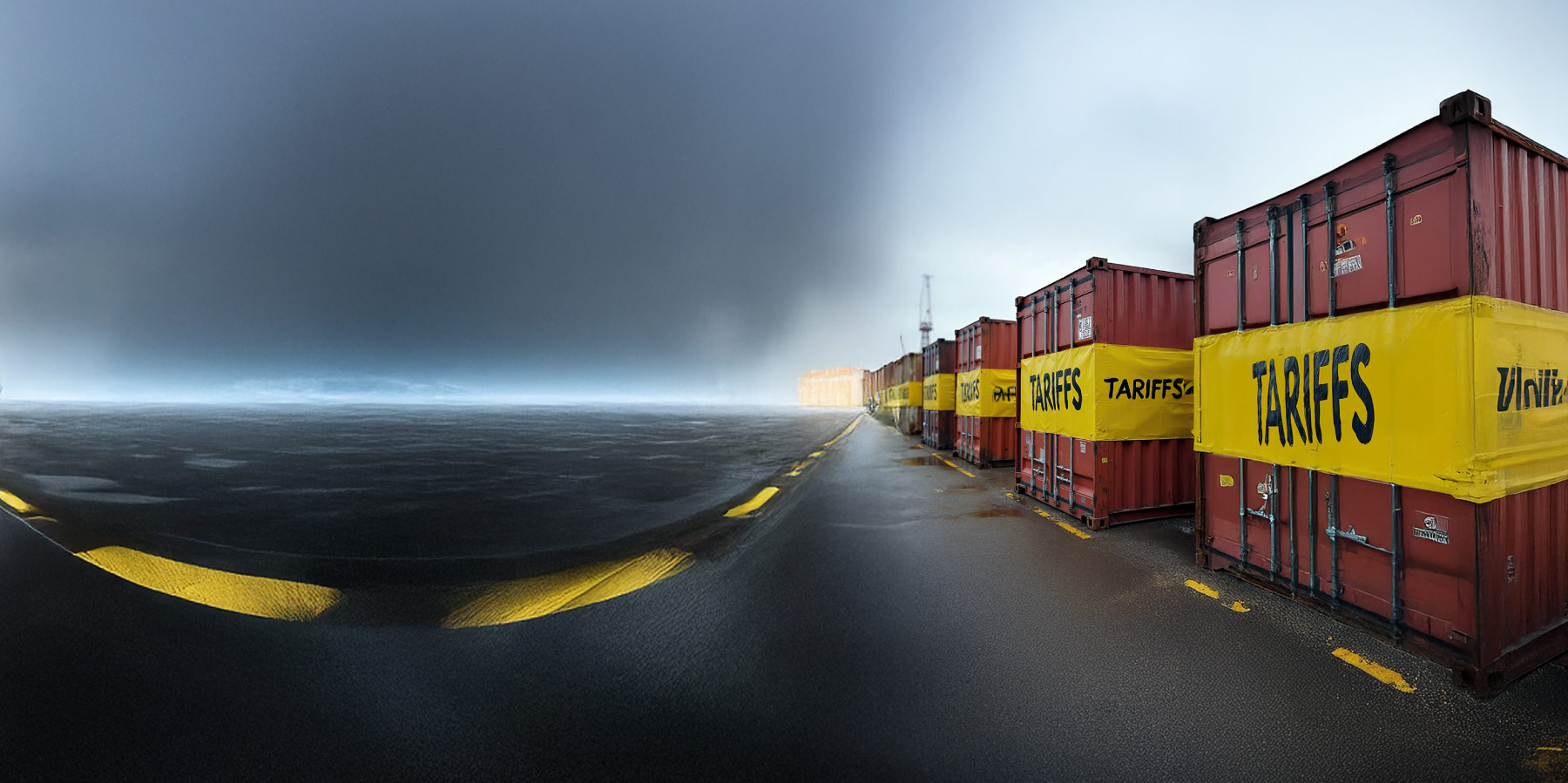
How COVID-19 exposed the fault lines of product complexity
As supply chains rebalance and return to something like normal after digesting the shocks induced by the COVID-19 pandemic, discussions are shifting to lessons learned. Much of the focus has been on issues like global trade, near-sourcing, just-in time inventory management, and supply chain resiliency. This is both understandable and relevant.
It takes two types
It all began with a provocative article in Medium that suggested that the much-discussed toilet paper shortage at the onset of the lockdowns was not due to hoarding, but in fact down to the bifurcated nature of the toilet paper supply chain.
Residential toilet paper has different quality specifications and packaging sizes to the industrial variety (that found in most workplaces, schools and institutions). Supply chains proved too rigid to lower industrial production quickly, and increase residential production in turn as lockdowns took hold.
Quickly thereafter, stories of surprising shortages of other consumer staples emerged.
Many markets experienced a shortage of eggs. At first glance this is difficult to explain, as egg production had not been impacted and egg consumption was stable. The difference turned out to be the location in which egg consumption was occurring.
In the interests of efficiency, the egg supply chain had grown into two separate streams: one for retail in cartons of various sizes that we all know as consumers, but also one for commercial kitchens where the eggs have been cracked open in advance and shipped in bulk liquid.
With restaurant and workplace cafeterias closed, the demand for the ‘liquid egg’ supply chain vanished, fully replaced by demand for whole eggs. The two supply chains were unable to merge quickly enough, leading to a vexing shortage of eggs, to the frustration of both consumers and producers.
A similar story developed for flour. Supply chains finely tuned to fill and deliver flour in large sacks for industrial bakeries were not sufficiently agile to switch to smaller packaging for retail consumers. This inflexibility was further exposed by the increase in demand for flour by a popular lockdown hobby of baking bread.
The food supply chain offers other examples of hyper-efficient models that led to waste and shortages during the pandemic, such as milk and onions. Casualties, you might say, of COVID supply chain dynamics.
Tactical supply-chain simplification
Not all consumer supply chains suffered, however.
Pasta manufacturer Barilla responded to the increased demand for pasta as a staple of lockdown shopping by rethinking their product offering, starting from the factory floor. In order to maximize capacity, it pared back its catalogue, halting production of more exotic pastas, cutting package size options and focusing on the most popular pasta references.
Unilever took similar steps with the UK culinary favorite, Marmite. The company stopped production of all packages sizes save the 250g jar. The manufacturing capacity gained by this simplification allowed the company to keep the store shelves stocked and get through a shortage in the brewer’s yeast used as an ingredient in Marmite.
The opportunities for simplicity were not limited to the food supply chain. One manufacturer of feminine hygiene products took steps similar to Barilla and Unilever: concentrating capacity on the intersection of best-selling references and highest production rates.
The result was record sales and market share in the midst of the pandemic. The marketing executive for the product line told us, “I knew my supply chain was a key strategic advantage, but I had not realized how much it could be a key tactical advantage as well.”
COVID can become a turning point for supply chain complexity
SKU proliferation has become a fact of life for companies constantly looking for ways to improve market share by finding ever-more narrow market niches with personalization, increases in package size options, line extensions, languages, or flavors.
Supply chain managers have struggled for years to bring attention to the costs of product complexity. All manner of activity-based costing, zero-based budgeting, and SKU profitability analysis usually results in simplicity programs that struggle to gain traction. This is because it is difficult to convince internal profit & loss (P&L) owners to forego real, tangible gross margins in exchange for indirect savings that are difficult to quantify.
But, at a minimum, the experience of companies that have successfully leveraged simplicity for market share and revenues during the pandemic will serve as a powerful argument in favor of at least some supply chain simplification.
No one would advocate that the egg or flour supply chains should relinquish the massive benefits of their dedicated supply chains. These efficiencies have enabled lower food prices enjoyed by millions of consumers. But the experience of Barilla and others shows that perhaps companies would be wise to understand that bringing complexity into supply chains does come with a very real cost, and the reasons for introducing inflexibility should be compelling and real, even if the economic equation can at times be difficult to quantify. Supply chain managers would be wise to consider citing these examples when faced with skepticism as to the cost of complexity and benefits of simplicity.
It will be interesting to see just how product portfolios evolve in the near future. Perhaps we can do more with less. Both from both a consumer and company point of view, COVID has helped prove the point.
Ralf W. Seifert is Professor of Operations Management at IMD. Prior to joining IMD, Professor Seifert studied and worked in Germany, Japan and the US. At IMD he currently directs IMD’s Digital Supply Chain Management program, which addresses both traditional supply chain strategy and implementation issues as well as digitalization trends and new technologies.
Richard Markoff is a supply chain researcher, consultant, coach, and lecturer. He has worked in supply chain for L’Oréal for 22 years, in Canada, the US and France, spanning the entire value chain from manufacturing to customer collaboration. He is also co-founder and Operating Partner of the Venture Capital firm Innovobot.
Research Information & Knowledge Hub for additional information on IMD publications
The supply chain risk management literature differentiates between disruption risk that arises from supply disruptions to normal activities and recurrent risk that arises from problems in coordinating supply and demand in the absence of disruption...
The US deal granting it future revenue and access to Ukraine’s mineral sector raises a broader question: is this the beginning of a model for American foreign policy, one that links strategic resource access to long-term diplomatic and financial c...
Digital transformation introduces a new set of parameters for firm innovation. Existing literature has found that family firms vary on their willingness to innovate. However, explanations of the factors that lead to a family firm’s (un)willingness...
Multinational businesses are recalibrating their global supply chains, with one eye focused firmly on Washington. As the Donald Trump administration reignites the use of tariffs as a blunt instrument of economic leverage, so-called “friendshoring”...
Research Information & Knowledge Hub for additional information on IMD publications
Research Information & Knowledge Hub for additional information on IMD publications
Research Information & Knowledge Hub for additional information on IMD publications
Research Information & Knowledge Hub for additional information on IMD publications
in Production and Operations Management June 2025, vol. 34, issue 6, https://doi.org/10.1177/10591478241302735
Research Information & Knowledge Hub for additional information on IMD publications
Research Information & Knowledge Hub for additional information on IMD publications
in I by IMD
Research Information & Knowledge Hub for additional information on IMD publications
in Small Business Economics 24 May 2025, ePub before print, https://doi.org/10.1007/s11187-025-01057-8
Research Information & Knowledge Hub for additional information on IMD publications
Research Information & Knowledge Hub for additional information on IMD publications
Research Information & Knowledge Hub for additional information on IMD publications






